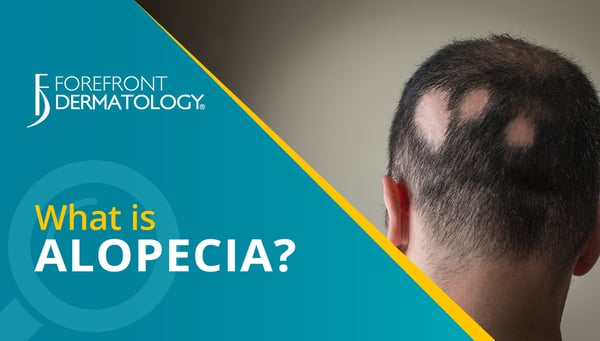
September is Alopecia Awareness Month. There are a lot of individuals out there who may have never heard of Alopecia. To those affected by Alopecia it’s a great time for the people around them to become more aware of their struggle.
For those who don’t know, alopecia means hair loss and in many cases there is an autoimmune cause. There are a few different types of Alopecia, but here are some of the main types:
• Androgenetic – This type is the one seen most commonly men and results in thinning of the hair on the frontal and top of the scalp.
• Alopecia Areata – the most common form of Alopecia that accounts for 70 percent of all cases. This type causes patches of hair loss on the head or face.
• Alopecia Totalis – this form causes complete hair loss on the head and face only.
• Alopecia Universalis – this form is more rare and means complete loss of all hair on the body.
• Cicatricial Alopecia – the rarest form of Alopecia because it causes permanent hair loss due to the hair follicles being destroyed. The other above forms of Alopecia all have a chance of hair regrowth because the follicles are still in place, where with this form the follicle has been destroyed due to chronic inflammation and resultant scarring (Cicatricial).
According to Dr. J. Mark Jackson, board-certified dermatologist with Forefront Dermatology,
Alopecia areata can affect every age, race and gender – including children. It is common for alopecia areata to develop in childhood. There are good treatments, and new research going on today to find better options, but at this point there is no definitive cure to prevent recurrence.
Though this disease doesn’t physically hurt, it does take an emotional and psychological toll. Depression, anxiety and social stresses are common in people with Alopecia areata. The cause of Alopecia areata is unknown, but traumatic events, hormone change and high stress levels are known triggers.
How do dermatologists diagnose and treat alopecia?
“Dermatologists can diagnose in two ways, visually or under a microscope. In the cases where your form of Alopecia does not destroy hair follicles and the hair can grow back, your physician may prescribe a topical, intralesional, or oral medication depending on the severity of your alopecia,” added Dr. Jackson.
Another newer form of treatment is called platelet-rich plasma, also known as PRP therapy. While PRP may not treat all forms of alopecia, it can be a great option for other forms because research has shown its efficacy in increasing hair count, hair thickness and the growth phase of the hair cycle.
Your dermatologist will determine the best treatment plan for you once your form of alopecia is diagnosed.
Hair Struggles?
If you believe you have alopecia or are struggling with hair loss and don’t know where to turn, the skin health experts at Forefront Dermatology are ready to help. To find the Forefront dermatologist nearest you, visit the locations page today.





